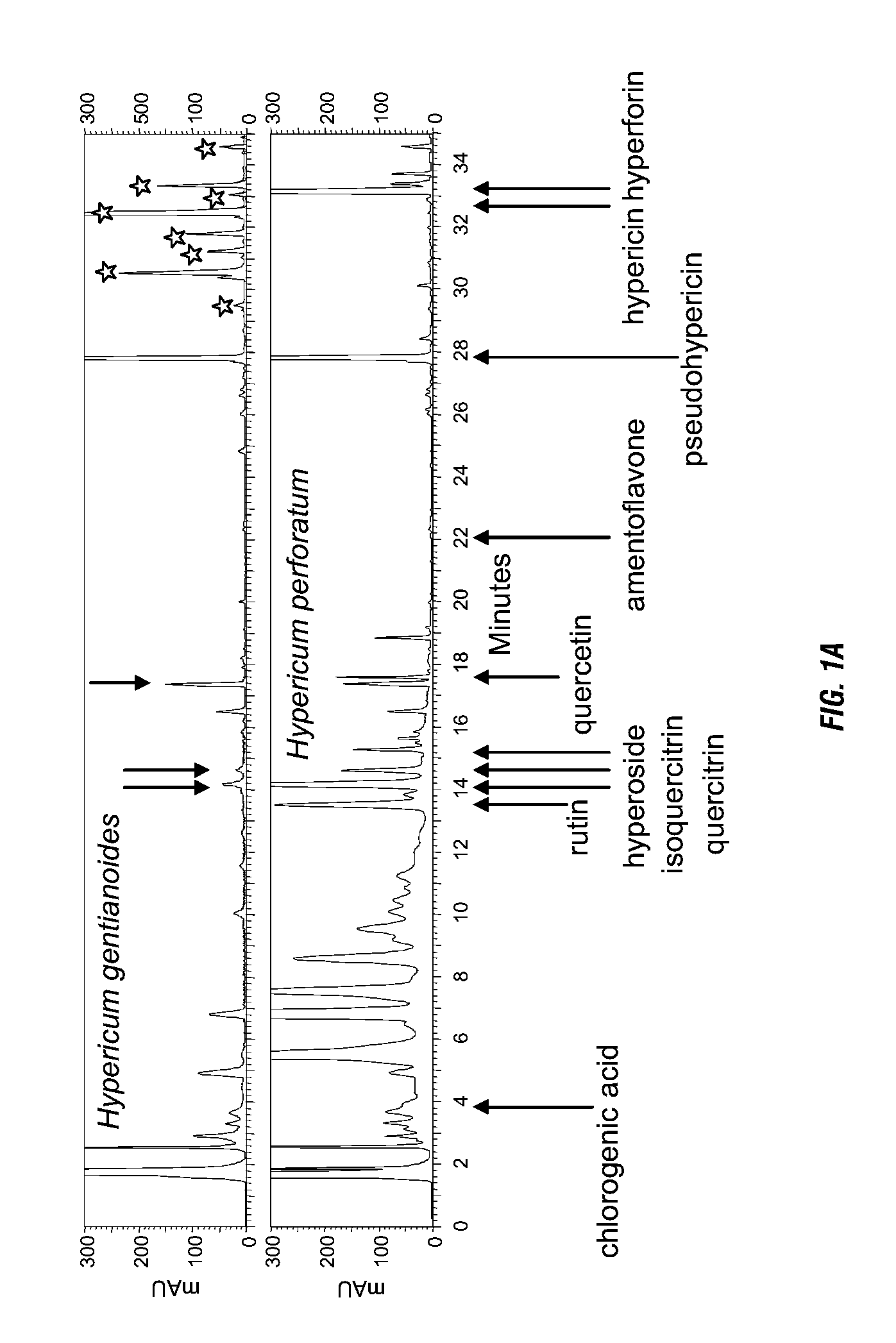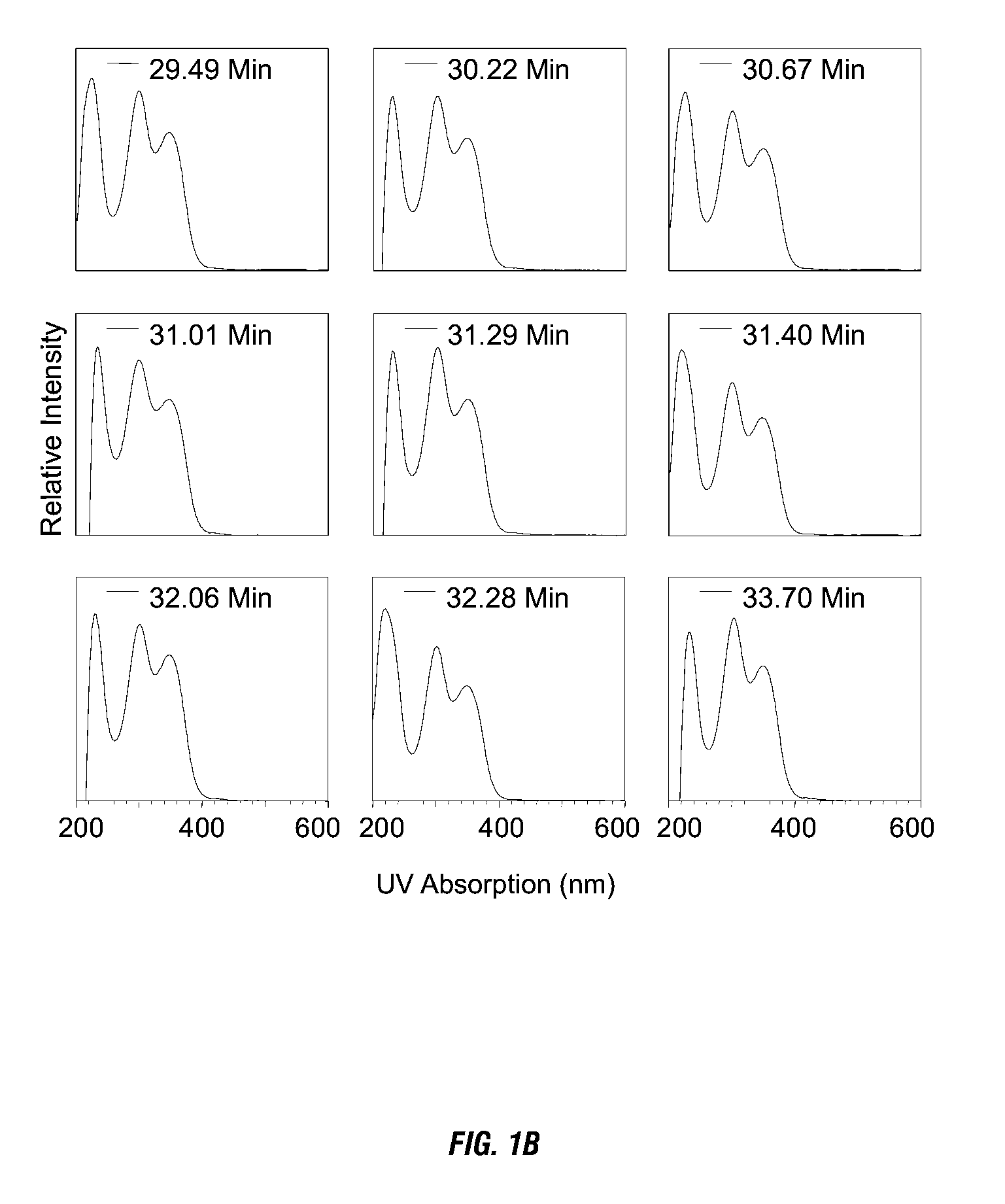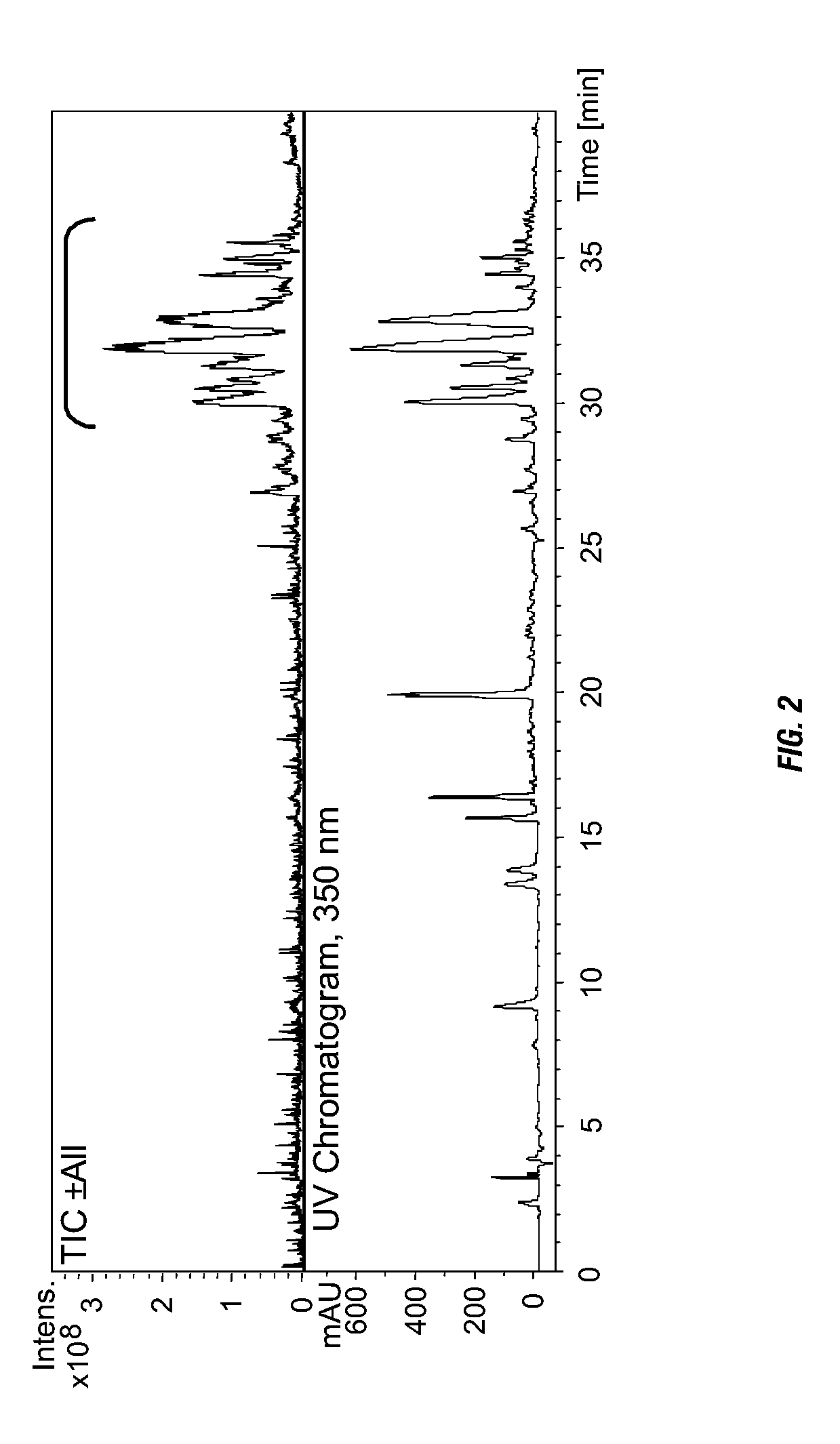Anti-inflammatory and anti-HIV compositions and methods of use
a technology of compositions and anti-hiv, applied in the field of anti-inflammatory and anti-hiv compositions and methods of use, can solve the problem of little biochemical research on this species, and achieve the effect of reducing the synthesis of prostaglandin e2 and reducing hiv infection
- Summary
- Abstract
- Description
- Claims
- Application Information
AI Technical Summary
Benefits of technology
Problems solved by technology
Method used
Image
Examples
example 1
Extracts
[0111]Plant material was acquired through the USDA North Central Regional Plant Introduction Station in Ames, Iowa. A voucher sample was collected and the accession is listed in the GRIN database. The whole upper aerial portion of the mature flowering plant was used.
[0112]Dry plants were ground in liquid nitrogen and immersed in methanol. The methanol / tissue was sonicated three times with a probe sonicator for 30 seconds and then repeated twice more. Samples were then centrifuged and the supernatant decanted. The sample was then filtered through 0.45 micron nylon syringe filters. Solvent was evaporated under nitrogen gas at 40° C. to prevent oxidation. The dried extract was weighed and then dissolved in cell culture grade DMSO.
HPLC
[0113]A Beckman Coulter HPLC with a Detector 160 PDA detector was used for initial chemical profiling. A Synergi Max-RP 150×4.6 mm column (Phenomenex Torrance, Calif. 90501) was used for analytical separation. For the mobile phase an acetonitrile / m...
example 2
Semi-Preparative HPLC
[0115]A Synergi Max-RP 250×10 mm column (Phenomenex Torrance, Calif. 90501) was chosen since it matches the stationary phase of the analytical method. For the mobile phase an acetonitrile / methanol 9:1 v / v (solvent B) and 10 mM ammonium acetate (solvent A) gradient elution was used; 13-15% B in 10 minutes, 15-100% B in 30 minutes, 100% B for 5 minutes, at 40° C. The slow rise from 13% to 15% over 10 min optimized the separation of more polar phenylpropanoids from later eluting flavonoids. While a range of flow rates from 3-5 mL / min were tested, a flow rate of 4.6 mL / min optimized separation of compounds, and matched retention times with the analytical method within 3 min or less.
Cell Culture
[0116]RAW264.7 macrophages were purchased from the American Type Culture Collections (ATCC; Manassas, Va.) and cultured in high glucose Dulbecco's Modified Eagle's medium (4500 mg / L D-glucose) (Invitrogen, Carlsbad, Calif.) and supplemented with 100 UI / ml penicillin / streptomyc...
example 3
[0121]To maximize the discovery of new potentially bioactive metabolites, Hypericum extraction methods were developed to maximize the preservation of unstable compounds while optimizing the extraction efficiency of a broad range of compounds. The extraction protocol was developed to be non-destructive, meaning it would not degrade easily oxidized compounds such as prenylated acylphloroglucinols. Hence there was no addition of heat, with all of the procedure occurring at or below room temperature. Methods such as soxhlet extraction are efficient; however, it can destroy thermally unstable compounds (Liu, F. F., C. Y. W. Ang, et al. (2000), “Optimization of Extraction Conditions for Active Components in H. perforatum Using Response Surface Methodology,”J. Agric. Food Chem. 48(8): 3364-3371). Since Hypericum species are known to contain unstable active compounds, namely phloroglucinols, liquid nitrogen grinding and sonication techniques were used to avoid altering the compounds. Also, ...
PUM
 Login to View More
Login to View More Abstract
Description
Claims
Application Information
 Login to View More
Login to View More - R&D
- Intellectual Property
- Life Sciences
- Materials
- Tech Scout
- Unparalleled Data Quality
- Higher Quality Content
- 60% Fewer Hallucinations
Browse by: Latest US Patents, China's latest patents, Technical Efficacy Thesaurus, Application Domain, Technology Topic, Popular Technical Reports.
© 2025 PatSnap. All rights reserved.Legal|Privacy policy|Modern Slavery Act Transparency Statement|Sitemap|About US| Contact US: help@patsnap.com



